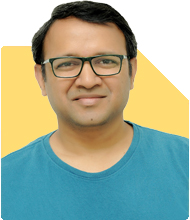49-year-old single mother seeks investment advice to build a 3 Cr corpus before retirement
Ramalingam Kalirajan |10894 Answers |Ask -Follow
Mutual Funds, Financial Planning Expert - Answered on Jul 15, 2024
He has an MBA in finance from the University of Madras and is a certified financial planner.
He is the director and chief financial planner at Holistic Investment, a Chennai-based firm that offers financial planning and wealth management advice.... more

Hi Sir, I am a 49 single mother. I have monthly SIP,s of 31 k amounting to 80 L in MFs, PPF 12L, FDs 12 L, 15 L in Senior citizen scheme on my mom's name, and no loans. I also have a LIC jeevan Saral policy of 7.2 L, which I want to close. Kindly advice me how do I maximise my returns and accumulate a corpus of 3 Cr, before my retirement.
It’s commendable that you’ve maintained a disciplined approach to saving and investing. Now, let’s discuss how to optimize your returns and aim for a corpus of Rs 3 crore by retirement.
Evaluating Current Investments
Mutual Funds
Mutual funds are a good choice for long-term wealth creation. They offer diversification and professional management. Your current investment in MFs through SIPs is a robust strategy. However, you should periodically review the performance of your funds. Ensure that your portfolio is well-diversified across various sectors and fund categories. Focus on actively managed funds, as they can potentially offer higher returns compared to index funds.
Public Provident Fund (PPF)
PPF is a safe and tax-efficient investment. It offers tax benefits under Section 80C and provides tax-free returns. However, the returns are relatively lower compared to equity MFs. Given your goal, consider continuing your contributions but not increasing them significantly.
Fixed Deposits (FDs)
FDs offer safety and guaranteed returns. However, the interest rates are lower than the inflation rate, which can erode your purchasing power over time. It’s wise to maintain some FDs for liquidity and safety but consider reducing the allocation and moving some funds to higher-yielding investments.
Senior Citizen Scheme
The Senior Citizen Scheme is a good investment for regular income. It offers safety and decent returns. Since it’s under your mother’s name, it can continue to provide a steady income stream.
LIC Jeevan Saral Policy
The LIC Jeevan Saral policy has not performed well historically compared to mutual funds. Surrendering the policy and reinvesting the proceeds in equity mutual funds could yield better returns in the long term. Consult with the insurer to understand the surrender value and process before making a decision.
Strategies to Maximize Returns
Increasing SIP Contributions
Consider increasing your SIP contributions whenever possible. An increase of 10-15% annually can significantly boost your corpus. This strategy leverages the power of compounding, helping you achieve your financial goal faster.
Diversifying Within Mutual Funds
Ensure your mutual fund portfolio is well-diversified. Invest across large-cap, mid-cap, and small-cap funds. Each category has its risk and return profile. A balanced mix can provide stability and growth. Additionally, sectoral and thematic funds can be included for added diversification but in smaller proportions.
Regular Portfolio Review
Conduct a regular review of your portfolio, at least once a year. Assess the performance of your funds and make necessary adjustments. Switching underperforming funds and rebalancing the portfolio as per market conditions is crucial for optimizing returns.
Tax-Efficient Investments
Utilize tax-efficient investment options to maximize your post-tax returns. Besides PPF, consider investing in Equity-Linked Savings Schemes (ELSS) for their tax benefits under Section 80C and potential for higher returns. However, ensure that tax-saving investments align with your overall financial goals and risk appetite.
Emergency Fund
Maintain an emergency fund equivalent to 6-12 months of expenses. This fund should be kept in liquid assets like savings accounts or short-term FDs. It ensures financial stability during unforeseen circumstances without disrupting your investment strategy.
Risk Management
Evaluate your risk tolerance and adjust your portfolio accordingly. As you approach retirement, gradually shift towards more conservative investments to protect your corpus. A higher allocation to debt funds and safer instruments can provide stability while still offering reasonable returns.
Long-Term Investment Discipline
Consistency in Investments
Maintaining a consistent investment approach is key to wealth creation. Avoid frequent switching based on market volatility. Stick to your investment plan and remain patient for long-term gains.
Goal-Based Investing
Align your investments with your financial goals. Clearly define your retirement corpus target and the time horizon. This approach helps in selecting suitable investment options and maintaining focus.
Reinvesting Dividends
Reinvest dividends and interest earned from your investments. This practice enhances the compounding effect, accelerating the growth of your corpus. Ensure that your MF investments are in growth options rather than dividend payout options.
Avoiding Common Pitfalls
Avoid Over-Concentration
Diversify your investments to avoid over-concentration in any single asset class or sector. This strategy mitigates risks and enhances the potential for higher returns.
Beware of Inflation
Inflation can erode your purchasing power over time. Focus on investments that offer inflation-beating returns. Equity mutual funds and other growth-oriented investments are essential for maintaining the real value of your corpus.
Monitor Expenses
Keep an eye on the expenses related to your investments. High expense ratios and fees can eat into your returns. Opt for funds with reasonable expense ratios and ensure that the returns justify the costs.
Seeking Professional Guidance
While this plan provides a comprehensive approach, it’s advisable to seek the guidance of a Certified Financial Planner (CFP). A CFP can offer personalized advice based on your unique financial situation and goals. They can help you navigate complex investment choices and ensure your portfolio is aligned with your retirement objective.
Leveraging Technology
Financial Planning Tools
Utilize financial planning tools and apps to track your investments and progress towards your goal. These tools offer valuable insights and help in making informed decisions.
Automating Investments
Automate your investments through SIPs and other systematic plans. Automation ensures discipline and consistency in your investment approach. It also reduces the temptation to time the market.
Final Insights
Reaching a corpus of Rs 3 crore before retirement is achievable with a strategic and disciplined approach. By optimizing your current investments, increasing your SIP contributions, and diversifying your portfolio, you can maximize returns. Regular reviews, risk management, and seeking professional guidance will further enhance your financial journey. Stay committed to your goals and make informed decisions to secure a comfortable retirement.
Best Regards,
K. Ramalingam, MBA, CFP,
Chief Financial Planner,
www.holisticinvestment.in
You may like to see similar questions and answers below
Ramalingam Kalirajan |10894 Answers |Ask -Follow
Mutual Funds, Financial Planning Expert - Answered on Apr 30, 2024
Ramalingam Kalirajan |10894 Answers |Ask -Follow
Mutual Funds, Financial Planning Expert - Answered on Jul 12, 2024
Ramalingam Kalirajan |10894 Answers |Ask -Follow
Mutual Funds, Financial Planning Expert - Answered on Jul 14, 2024
Ramalingam Kalirajan |10894 Answers |Ask -Follow
Mutual Funds, Financial Planning Expert - Answered on Jan 02, 2025
Ramalingam Kalirajan |10894 Answers |Ask -Follow
Mutual Funds, Financial Planning Expert - Answered on Aug 01, 2025
Radheshyam Zanwar |6747 Answers |Ask -Follow
MHT-CET, IIT-JEE, NEET-UG Expert - Answered on Dec 16, 2025
Shalini Singh |181 Answers |Ask -Follow
Dating Coach - Answered on Dec 16, 2025
Patrick Dsouza |1429 Answers |Ask -Follow
CAT, XAT, CMAT, CET Expert - Answered on Dec 16, 2025
Nayagam P P |10858 Answers |Ask -Follow
Career Counsellor - Answered on Dec 16, 2025
Nayagam P P |10858 Answers |Ask -Follow
Career Counsellor - Answered on Dec 16, 2025
Samraat Jadhav |2510 Answers |Ask -Follow
Stock Market Expert - Answered on Dec 16, 2025
Samraat Jadhav |2510 Answers |Ask -Follow
Stock Market Expert - Answered on Dec 16, 2025
Nayagam P P |10858 Answers |Ask -Follow
Career Counsellor - Answered on Dec 16, 2025
Nayagam P P |10858 Answers |Ask -Follow
Career Counsellor - Answered on Dec 16, 2025
Ramalingam Kalirajan |10894 Answers |Ask -Follow
Mutual Funds, Financial Planning Expert - Answered on Dec 16, 2025

























